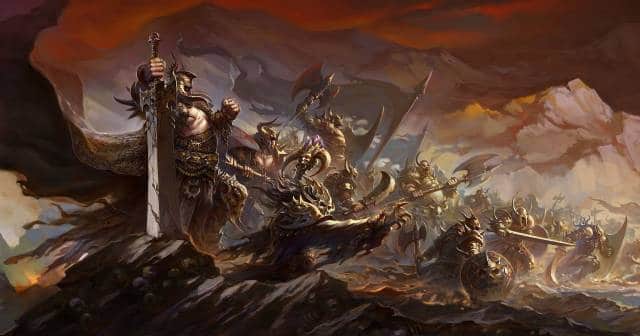To the roots of the myth
Warhammer’s notoriety, however, is not only the result of its miniatures, its armies, magic, and board games, but it is especially fortunate to its expanded universe, the legends and the myths of the numerous books and stories that elevate the names of Emperor Karl Franz, Grombrindal, Balthasar Gelt and other dozens and dozens of heroes.
From the pages of Bestiario and the chapters of works such as Gotrek & Felixand all the other publications of the Black Library – a publishing house controlled by Games Workshop – has thus brought to life the dark fantasy world of Warhammer, consisting of over ten millennia of history, from the creation of races after the arrival of the Ancients, to the End of the Times, with the war between Chaos and the forces of evil opposed to the realms of good, historical setting in which they are set great part of the latest video games, from Warhammer: End Times – Vermintide , to the Total War: Warhammer saga . Warhammer Fantasyit is not a product of pure invention.
Let me explain better: geography, history, and races that make up the world created by Games Workshop sink their roots into a real and current past, and so the continents are merely a transposition with some simple modification of the five existing ones , while the various races have many in common with some of the past realms that existed.
Only to make some examples, the Empire is that a clear transposition of the Holy Roman Empire at the time of the Renaissance, with its courts and its knights, the Kingdom of Bretonnia remembers very close to feudal France and has much in common with the cycle of King Arthur, while the forces of Norsca are nothing more than the cousins of the Viking hordes invading the northern coasts – but not only – of Europe during the Middle Ages.
While on the one hand the fictional universe resumes many historical clichés, even for some of the most famous battles – such as the Crusade invoked by the Empire and Bretonnia after the invasion of Estalia by Sultan Jaffar, which takes very close the Reconquista of Spain invaded by the Moors – there is obviously no lack of inspiration even for the fantasy context.
Here too, the sources are quite obvious, and among them is the Tolkien universe, but not only.
Warhammer Fantasy was also influenced by the stories of Michael Moorcock and his cycle of stories telling the epic of Elric Melniboné, but also by Robert E. Howard through the universe of Conan the Barbarian. The union of these multiple sources has created a true parallel world,
From table to screen
All this well of God was too rich and detailed for not being exploited in numerous video games of the setting, which had now become almost bigger than the Games Workshop itself. As mentioned in the opening, the English company’s feeling with the video game world is not recent and initially was not even directly linked to Warhammer.
During its first expansive phase, Games Workshop was also the direct publisher of some of the games that preceded the rise of his most famous work, including a variety of text adventures – such as the aforementioned Tower of Despair – but also far beyond fantasy canons typical of the London home, such as D-Day, a title set during the Normandy landing and the particular Battlecars , a racing game developed by SLUG for ZX Spectrum and released in 1984.
Games Workshop did not achieve a direct success in this area, and even for internal vicissitudes and changes at the top in coinciding with the release of Warhammer , the UK company preferred to step on the side and entrust its new license to third-party publishers and developers.
The move was very fortunate, and even after more than two decades, the long queue has not stopped. In 1991, HeroQuest came out, videogame transmission entrusted to Gremlin Interactive and 221b Software Development by the famed Warhammer board game.
The game, released for almost all of the systems of those years – such as Amiga, Atari ST and Commodore 64 – achieved quite a success, so that in 1994 came out the sequel, HeroQuest II: Legacy of Sorasil , entrusted to this time at Shembridge , Gremlin Interactive.
However, it took another year before the arrival of the first “true” Warhammer Fantasy title : in 1995, in conjunction with the never-so-popular Blood Bowl , Warhammer was released : Shadow of the Horned Rat, a real-time strategy developed by Mindscape and landed on both PCs and surprisingly on PlayStation. Despite the ruthless competition of some milestones such as Command & Conquerand Heroes of Might and Magic: A Strategic Quest , the title was appreciated by critics and the public.
The turn was however with the following Warhammer: Dark Omen , followed by the previous Shadow of the Horned Ratwhich improved many aspects so much so that it could still be considered one of the great classics amongst the strategists.

